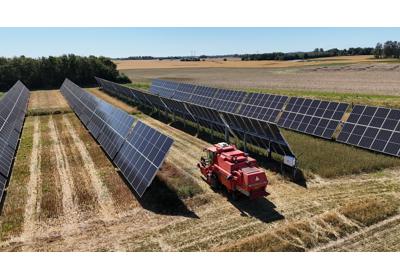pvlib.irradiance.get_extra_radiation#
- pvlib.irradiance.get_extra_radiation(datetime_or_doy, solar_constant=1366.1, method='spencer', epoch_year=2014, **kwargs)[source]#
Determine extraterrestrial radiation from day of year.
Specific references for each method are cited in the parameter descriptions below, while a more general discussion of the different models may also be found in [1] and [2].
- Parameters:
datetime_or_doy (numeric, array, date, datetime, Timestamp, DatetimeIndex) – Day of year, array of days of year, or datetime-like object
solar_constant (float, default 1366.1) – The solar constant. [Wm⁻²]
method (string, default spencer) – The method by which the extraterrestrial radiation should be calculated. Options include: pyephem, spencer [3], asce [4], ‘nrel’ [6].
epoch_year (int, default 2014) – The year in which a day of year input will be calculated. Only applies to day of year input used with the pyephem or nrel methods.
kwargs – Passed to
nrel_earthsun_distance().
- Returns:
dni_extra (float, array, or Series) – The extraterrestrial radiation normal to the sun. Pandas Timestamp and DatetimeIndex inputs for
datetime_or_doywill returndni_extraas a Pandas TimeSeries. All other input data types will yielddni_extraas a float or an array of floats. See dni_extra. [Wm⁻²]
References
Examples using pvlib.irradiance.get_extra_radiation#
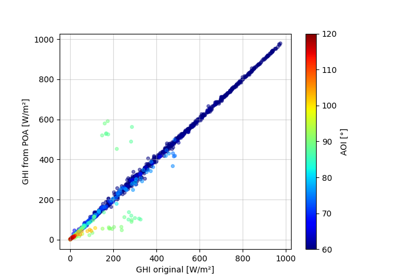
Reverse transposition using one year of hourly data
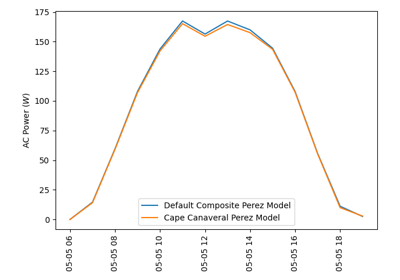
Use different Perez coefficients with the ModelChain
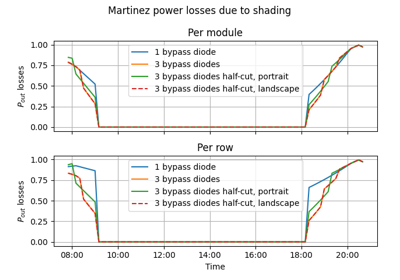
Modelling shading losses in modules with bypass diodes
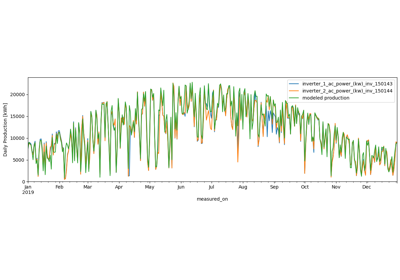
4.7 MW CdTe single-axis tracking (OEDI System 9068)

